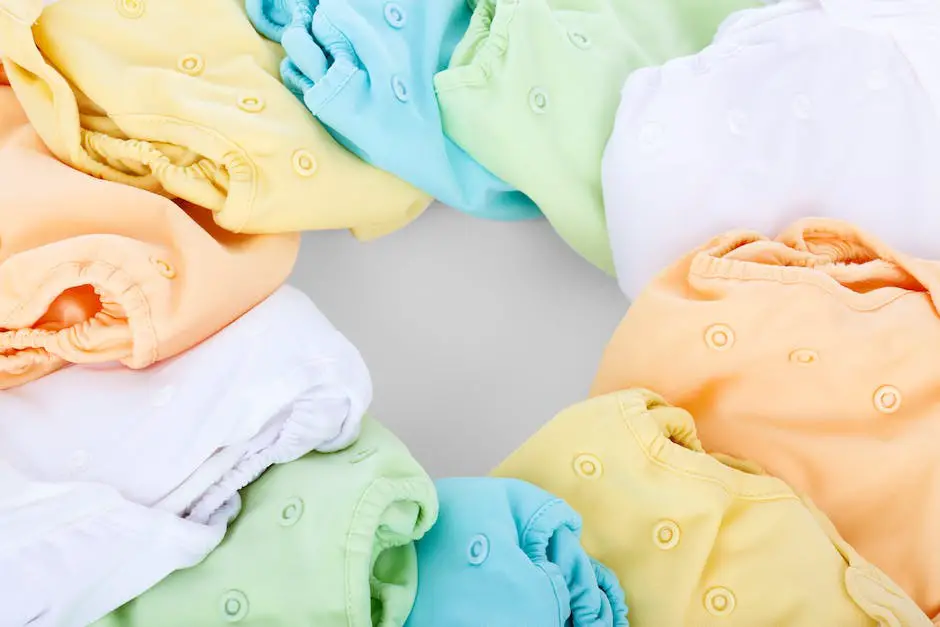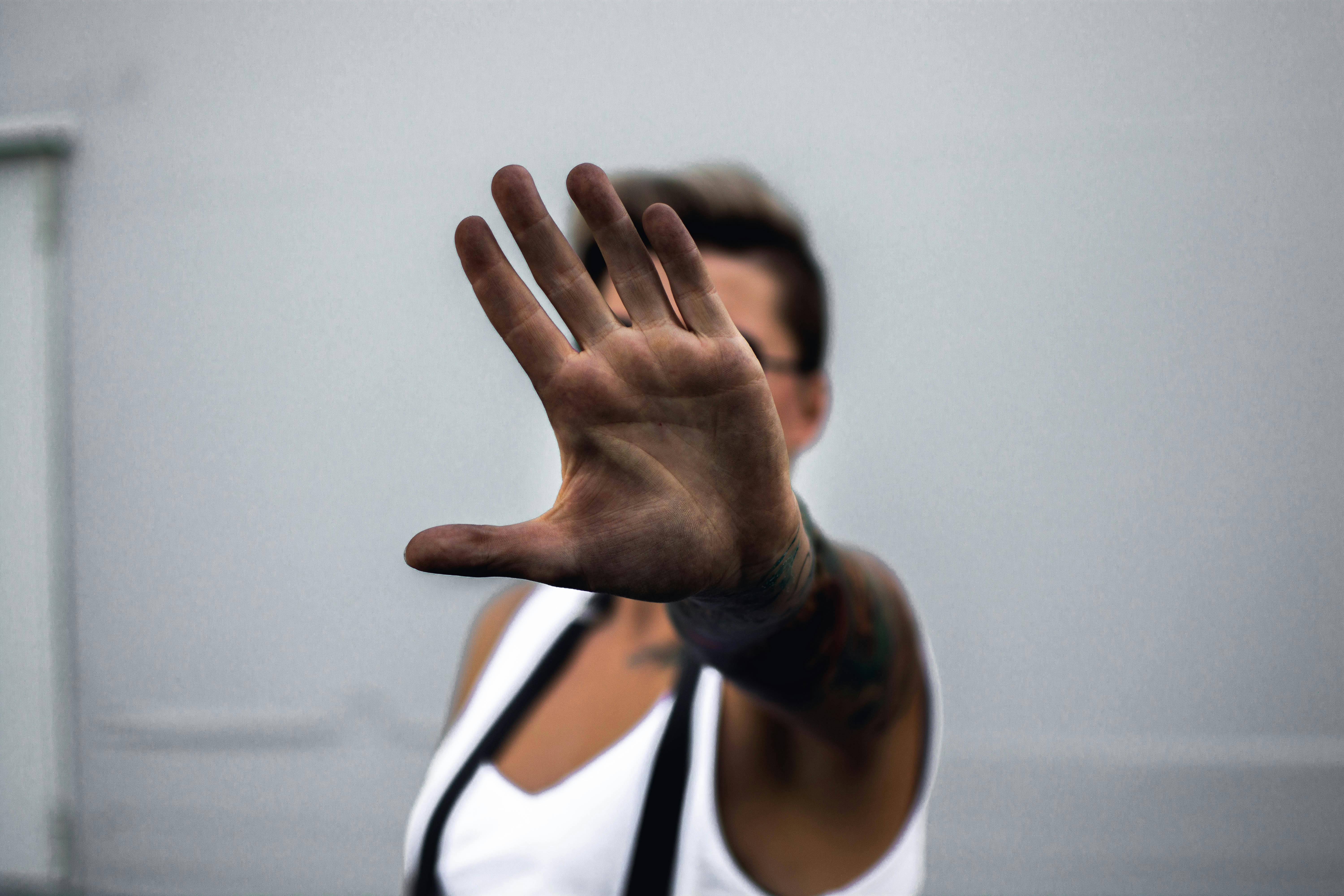When Do Babies Stop Wearing Diapers

Diapers are an essential part of parenting a baby. They keep the baby comfortable, help them learn and develop, and make it easier for parents to take care of their little one. But when do babies stop wearing diapers? It can be a tricky question to answer as it varies from baby to baby. In this article, we’ll take a look at the signs that indicate your baby is ready to move on from diapers and explore the different options available for potty training.Babies typically stop wearing diapers around the age of 2 to 3 years old.
Age Guidelines for Potty Training
Potty training is a process that typically starts when your child is between two and three years old. Age guidelines for potty training may vary slightly from one child to the next, but it’s important to consider their physical, mental, and emotional development before beginning the potty-training process. Each child will approach potty training differently – some may be ready to start earlier than others. It’s important to remember that every child has their own timeline, so it’s best not to rush them into the process.
It is recommended that you begin talking with your child about potty training at around 18 months of age. At this age, your child should be able to understand basic instructions and start communicating their needs more clearly. Encouraging them to use words like “potty” or “toilet” can help them learn more about the process and become more comfortable with it.
By two years old, many children are ready to begin potty training. At this age, they should have better bladder control and an increased awareness of their bodily functions. You can also start introducing tools such as step stools or a potty chair to help get them used to the idea of using the toilet independently.
At three years old, many children have already mastered the basics of potty training and may even be ready for toilet training – allowing them to go in a regular toilet without assistance. By this age, they should also be able to recognize when they need to go and properly communicate those needs with you.
Remember that every child is different and will approach potty training differently. While there are some general guidelines for when you should start introducing the concept of using the toilet, it’s important not to push your child too hard or expect too much from them too soon – each child will progress at their own pace!
Developmental Milestones to Consider
One of the most important aspects of child development is keeping track of developmental milestones. This helps parents and caregivers to ensure that their children are progressing at a normal rate, and can provide early warning signs if a child is lagging behind in any particular area. Developmental milestones can be physical, cognitive, behavioral, social, and emotional, so it is important to understand all of these areas in order to be sure that a child is developing properly.
Physical milestones include the ability to walk, run, jump, climb stairs, kick a ball, throw a ball, dress themselves independently and use the toilet. Gross motor skills develop first but fine motor skills such as using scissors and writing will also need to be noted when assessing physical development in toddlers and older children.
Cognitive milestones involve a child’s intellectual abilities such as problem solving skills and understanding concepts such as shapes and colors. A baby’s ability to recognize faces increases over time but cognitive development begins in earnest when they are able to recognize letters or numbers. As they grow older they should become more adept at problem solving tasks such as puzzles or mazes.
Behavioral milestones involve the ability to follow instructions and rules, self-control behaviors like not hitting or shouting at peers or adults when frustrated or angry, self-regulation like being able to focus on tasks for longer periods of time without getting distracted easily, recognizing emotions in others and managing their own emotions appropriately.
Social milestones refer to the ability of a child to interact with their peers appropriately by following social rules such as taking turns or sharing toys during playtime. Children should also be able to understand facial expressions and body language cues from adults and other children which will help them interpret social situations more accurately. As children grow older they should be able to build relationships with others by expressing empathy towards them by offering words of comfort when needed or understanding their feelings when they express them verbally or non-verbally.
Finally emotional milestones refer to how well a child can cope with change or difficult situations such as adjusting after moving homes or having changes in family dynamics due to divorce or death of family members. It is important for parents and caregivers to note how well a child can express their feelings verbally so that they can provide appropriate support during times of distress. It is also important for them to recognize signs of anxiety or depression in children so that they can seek professional help if needed.
Overall understanding developmental milestones in all areas will help parents better support their children as they progress through different stages of development throughout childhood into adulthood.
Signs That Your Baby Is Ready to Transition Out of Diapers
Potty training is an important milestone for babies and parents alike. It can be a daunting task, but it should be an enjoyable and rewarding experience for both parties. While there is no set age when your baby is ready to transition out of diapers, there are certain signs that will help you to know when the time is right. Here are some signs that your baby is ready to transition out of diapers:
1. Dryness During Diaper-Free Time: One sign that your baby may be ready to transition out of diapers is if they stay dry during diaper-free time. This may mean allowing them some diaper-free time when they’re awake and supervised or using a waterproof potty seat during diaper changes. If they stay dry during these times, this could indicate that they’re beginning to recognize the sensation of needing to go, and are able to hold it.
2. Interest in the Potty: Another sign that your baby may be ready to transition out of diapers is if they show interest in the potty or toilet. If they seem interested in sitting on the potty or try to imitate adults using the toilet, this could mean that they’re starting to understand what it’s for and could be ready for potty training.
3. Understanding Instructions: A third sign that your baby may be ready for potty training is if they understand simple instructions related to potty use, such as “go pee on the potty” or “go poop in the toilet”. If they can comprehend these commands and begin responding positively, then it’s likely a good time to start transitioning out of diapers.
4. Self-Initiated Toilet Use: Lastly, one sign that your baby may be ready for potty training is if they start self-initiating toilet use. If you notice them spontaneously going over to the potty or toilet and trying to use it without prompting from you, then this could mean that they’re beginning to understand how it works and are becoming more independent with their toileting needs.
These are some signs that your baby may be ready for potty training and transitioning out of diapers. Every child develops differently so what works for one child may not work for another, but by looking out for these signs you should have a better idea about when the time might be right!
Factors That Influence the Timing of Diaper-Weaning
Diaper-weaning is an important milestone for parents and their children. The timing of diaper-weaning is influenced by many factors, including the child’s age, physical development, and the parents’ readiness.
Age is a major factor that affects the timing of diaper-weaning. Babies typically start to show signs of being ready for diaper-weaning between 18 and 24 months. By this time, most babies have the physical coordination to use the toilet independently. If a baby is not showing any signs of readiness by 24 months, it may be best to wait until they are older before beginning the process.
Physical development also plays an important role in diaper-weaning. Some babies may be physically ready to begin weaning before they reach 18 months, while others may take longer to reach this milestone. It’s important for parents to observe their child’s physical development and look for signs that they are ready to start using the toilet instead of diapers.
The readiness of the parents is also an important factor in determining when to begin weaning from diapers. Many parents find that it takes a lot of patience and hard work to help their children transition from diapers to using the toilet successfully. It can be helpful for parents to discuss their expectations with each other ahead of time so that they can both be prepared for this challenging but rewarding journey.
Finally, family culture and traditions can play an important role in when a child is weaned from diapers. Some families may prefer to wait until a certain age or stage before beginning diaper-weaning, while others may take a more relaxed approach and allow their child more freedom in deciding when he or she is ready to make this transition.

Making the Transition Easier
Making the transition to a new job can be difficult. It requires leaving behind familiarity and adapting to a new environment, which can be daunting. But with preparation and knowledge, you can make the transition easier. Here are some tips for making the switch smoother:
Research Your Employer
Before you start your new job, take some time to research your employer. Learn about their history, mission statement, and values. This will help you understand the company culture and give you an idea of what to expect on your first day. Additionally, familiarize yourself with the organization’s policies and procedures so that you can hit the ground running.
Prepare Your Workspace
Take some time to make sure your workspace is well-prepared for your arrival. Make sure all of your supplies are in order and that everything is neat and organized. If possible, visit the office before your first day so that you can get acquainted with it ahead of time.
Familiarize Yourself With Colleagues
Before starting work, familiarize yourself with your colleagues. Do a bit of research into their backgrounds so that you feel comfortable when talking to them on the job. Additionally, don’t be afraid to reach out via email or social media prior to starting work – this will help break down any potential barriers or anxieties before beginning work.
Set Goals for Yourself
Set goals for yourself during this transition period. Make a plan for how you want to approach each task and set a timeline for when you want each task completed by. This will help keep you on track during this transition period and ensure that you don’t fall behind.
Be Patient With Yourself
It’s important to be patient with yourself as you make this transition. Remember that it takes time to learn new tasks or adjust to a different environment – don’t expect too much too soon! Give yourself grace during this process – it may take longer than anticipated but eventually things will begin falling into place.
<br
When to Seek Professional Advice About Potty Training
Potty training can be a challenging experience for both parents and children alike. It is important to understand that every child develops at a different rate and may not be ready for potty training until they are 18 months or older. However, if your child is still having difficulty with potty training after that age, it may be time to seek professional advice about potty training.
If you are considering seeking help from a professional for potty training, there are several signs that you should look for. If your child is not showing any interest in using the toilet, has accidents frequently, or has difficulty holding their bladder or bowel movements, these could all be signs that they would benefit from professional help. Additionally, if your child is having trouble understanding the concept of potty training or is having difficulty following instructions on how to use the toilet, these could also indicate that professional help would be beneficial.
It is important to remember that potty training can take time and patience. If you feel like you have done all you can do on your own and your child is still struggling with mastering this skill, it may be time to seek professional advice from a doctor or therapist specializing in potty training issues. Professional advice can provide guidance and support during this difficult period of learning new skills and behaviors.
Disposable vs. Cloth Diapers
When it comes to diaper choices, parents have two main options: disposable or cloth diapers. Each option has its own pros and cons, so it is important to understand the differences between them before making a decision.
Disposable diapers are popular because they are easy to use and dispose of. They are also more convenient for busy parents who don’t have time to clean cloth diapers. Disposable diapers also come in a variety of sizes, so they can easily be adjusted as a baby grows.
However, disposable diapers can be expensive over time and they are not great for the environment. They also contain chemicals and other substances that may irritate a baby’s skin. Some babies may develop diaper rash from using disposable diapers.
Cloth diapers, on the other hand, are much better for the environment since they can be reused many times over. They are also generally less expensive than disposable diapers in the long run because you don’t have to keep buying new ones. Additionally, cloth diapers can be washed in natural detergents without any harsh chemicals that could irritate a baby’s skin.
The downside of cloth diapers is that they require more work for parents since they need to be washed regularly and dried before use again. Cloth diapers also tend to be bulkier than disposables, which could make them uncomfortable for some babies. Additionally, cloth diapers do not come in as many sizes as disposables do, which could mean that you need to buy several sets of different sizes as your baby grows.
Ultimately, both disposable and cloth diapers have their advantages and disadvantages depending on your lifestyle and preferences as a parent. It is important to weigh all of your options before deciding which type of diaper is best for you and your baby.

Conclusion
A baby’s readiness to stop wearing diapers depends on their age, physical development, and the level of potty training they have had. Parents should start potty training when their child is between 18-24 months old. During this time, their motor skills and cognitive abilities will start to develop and they will be able to understand better when they need to use the toilet. With consistent practice, most babies will be able to stop using diapers by the age of three. However, if parents notice any signs of discomfort or regression in potty training at any stage, they should consult with their pediatrician or other health care professional for advice.
In conclusion, when do babies stop wearing diapers depends on several factors including age, physical development and the level of potty training that has been achieved. With patience and consistent practice from parents and caregivers, most babies can be diaper free by the age of three.
